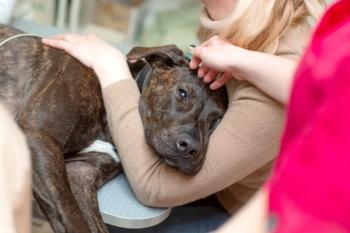
Nasopharyngeal Microbiota of Beef Cattle After Feedlot Arrival
The nasopharyngeal microbiota of beef cattle undergoes significant and rapid changes following arrival at a feedlot, increasing cattle’s susceptibility to bovine respiratory disease after feedlot placement.
The nasopharyngeal (NP) microbiota of beef cattle undergoes significant changes in phylogenetic diversity and richness within days of feedlot arrival, according to a study recently published in BMC Microbiology.
The NP microbiota of cattle has a rich and diverse bacterial population that varies between animals and changes with age. Vital to bovine health, this microbiota can also house potentially pathogenic bacteria (Mannheimia haemolytica, Pasteurella multocida, Histophilus somni, Mycoplasma bovis) associated with bovine respiratory disease (BRD), a costly and significant disease in feedlot cattle.
As noted by the authors, the NP microbiota’s role in health maintenance and disease development underscores the importance of studying how production practices affect livestock microbiota.
Study Design
Investigators selected fourteen 8-month old heifers from a closed, disease-free research farm. The heifers were transported to a nearby feedlot and isolated from other cattle upon arrival. NP samples were taken with nasal swabs on days 0 (at the research farm on the day of transport), 2, 7, and 14. Samples were cultured to isolate and detect BRD-associated bacteria; Mycoplasma was not cultured.
To confirm culture results, investigators extracted DNA from the samples and conducted polymerase chain reaction testing to amplify and sequence the 16S rRNA gene; this gene is present in all bacteria and is commonly used to identify and classify bacteria. Next, the amplified gene sequences were grouped into operational taxonomic units (OTUs) based on sequence similarity to create a phylogenetic tree. Investigators used the phylogenetic information to calculate each sample’s diversity and richness and determine the NP microbiota’s functionality.
Results
Neither M. haemolytica nor H. somni was detected via culture. P. multocida was detected via culture for 8 heifers but was not present at all time points for any of these animals. Gene sequencing results indicated a high prevalence of Mycoplasma compared with the other BRD-associated bacteria. Importantly, all 14 heifers remained healthy, “confirming that Mycoplasma spp, P. multocida, and M. haemolytica are natural inhabitants of the NP tract,” the authors wrote.
Nearly all identified bacterial and archaeal gene sequences belonged to 6 phyla. At the genus level, investigators observed marked inter-individual variability in the NP samples. Interestingly, several of the most abundant genera were anaerobic species; the NP is considered to be predominantly aerobic.
The NP microbiota’s diversity and richness increased most markedly from day 0 to days 2 and 7. By day 14, though, the microbiota became more homogeneous, as indicated by an increased number of shared OTUs among samples between days 0 and 14.
Notably, the relative abundance of Mycoplasma was significantly higher on day 14 than on days 0, 2 and 7, indicating that NP microbiota changes within the first 14 days of feedlot arrival to facilitate Mycoplasma proliferation.
The investigators used a software program called PICRUSt (Phylogenetic Investigation of Communities by Reconstruction of Unobserved States) to infer the NP microbiota’s functionality at each time point. The genes for several functions, including amino acid metabolism and cell motility, were more abundant on day 0 than on day 14. In contrast, the genes of other functions, including translation and replication and repair, were more abundant on day 14 than on day 0; these genes were most influenced by Mycoplasma’s increased relative abundance on day 14.
Conclusions
Overall, the study results demonstrate how the NP microbiota in cattle is affected by feedlot arrival. According to the authors, these results provide valuable insight into why BRD susceptibility is high in cattle shortly following feedlot placement.
Dr. JoAnna Pendergrass received her Doctor of Veterinary Medicine degree from the Virginia-Maryland College of Veterinary Medicine. Following veterinary school, she completed a postdoctoral fellowship at Emory University’s Yerkes National Primate Research Center. Dr. Pendergrass is the founder and owner of JPen Communications, a medical communications company.
Newsletter
From exam room tips to practice management insights, get trusted veterinary news delivered straight to your inbox—subscribe to dvm360.




